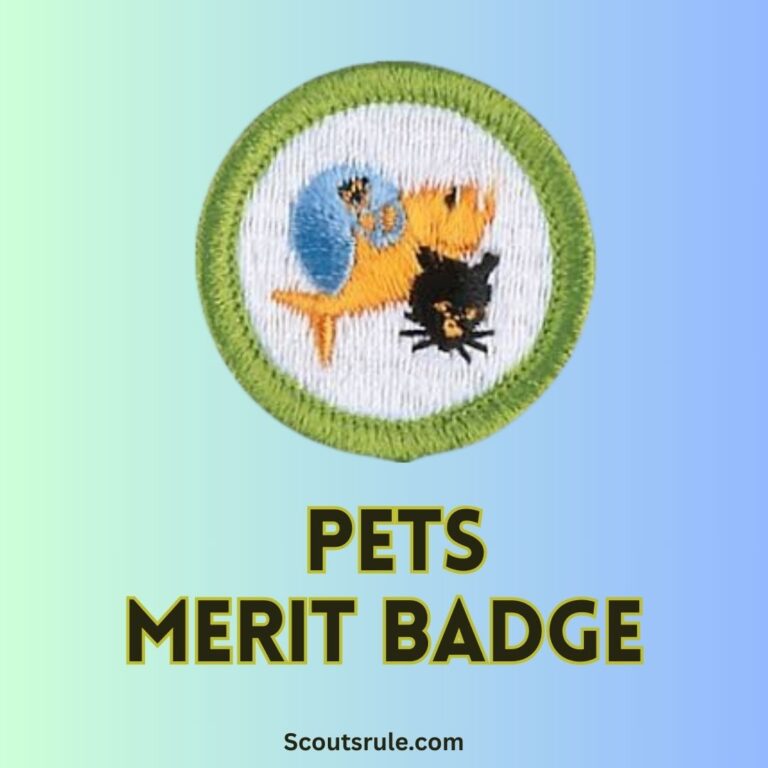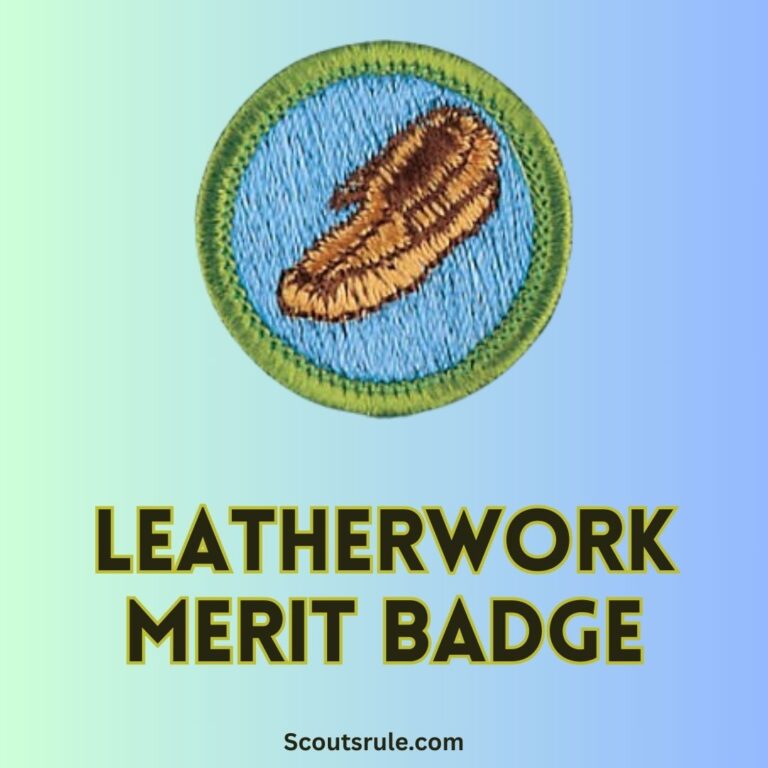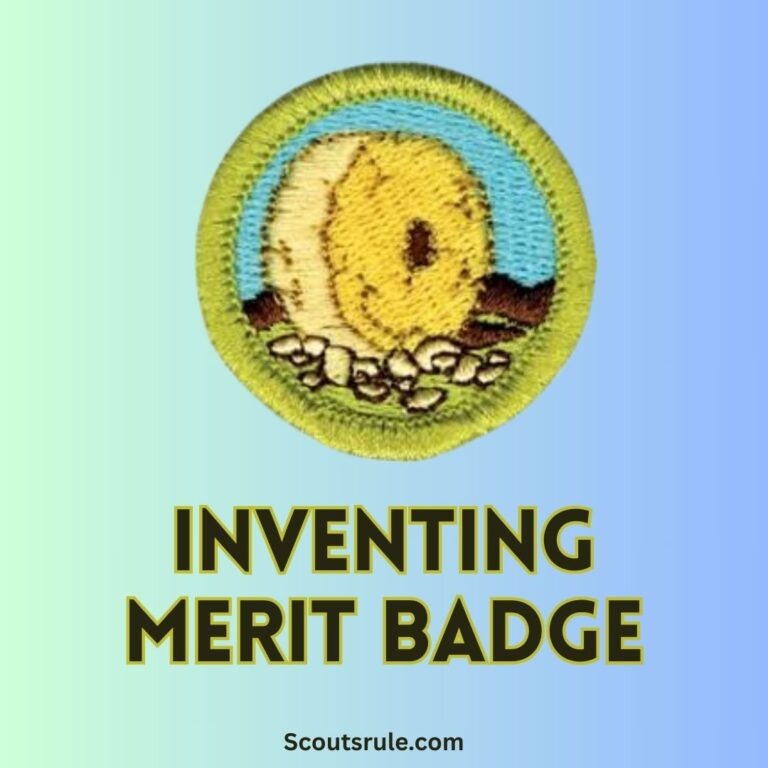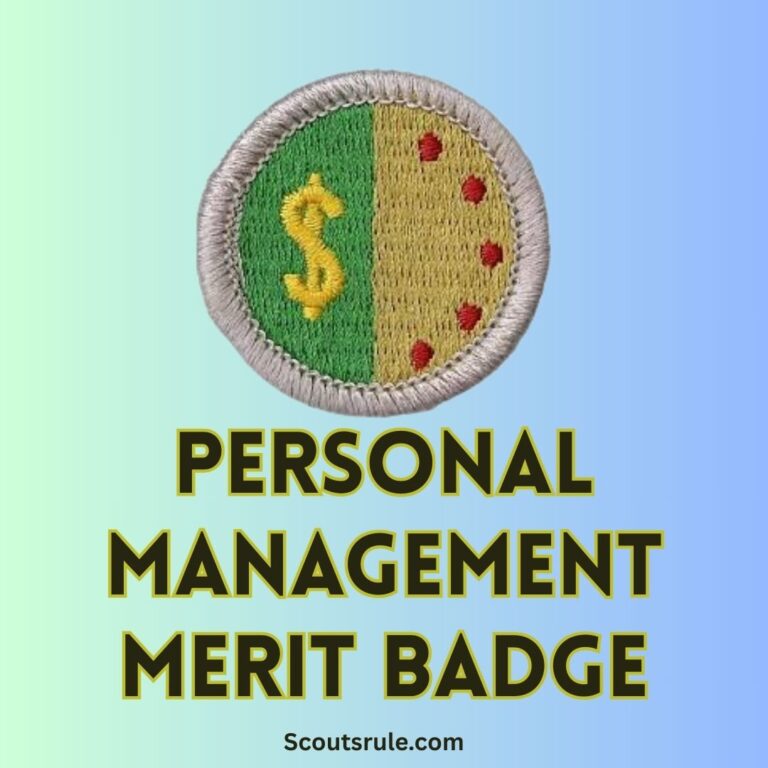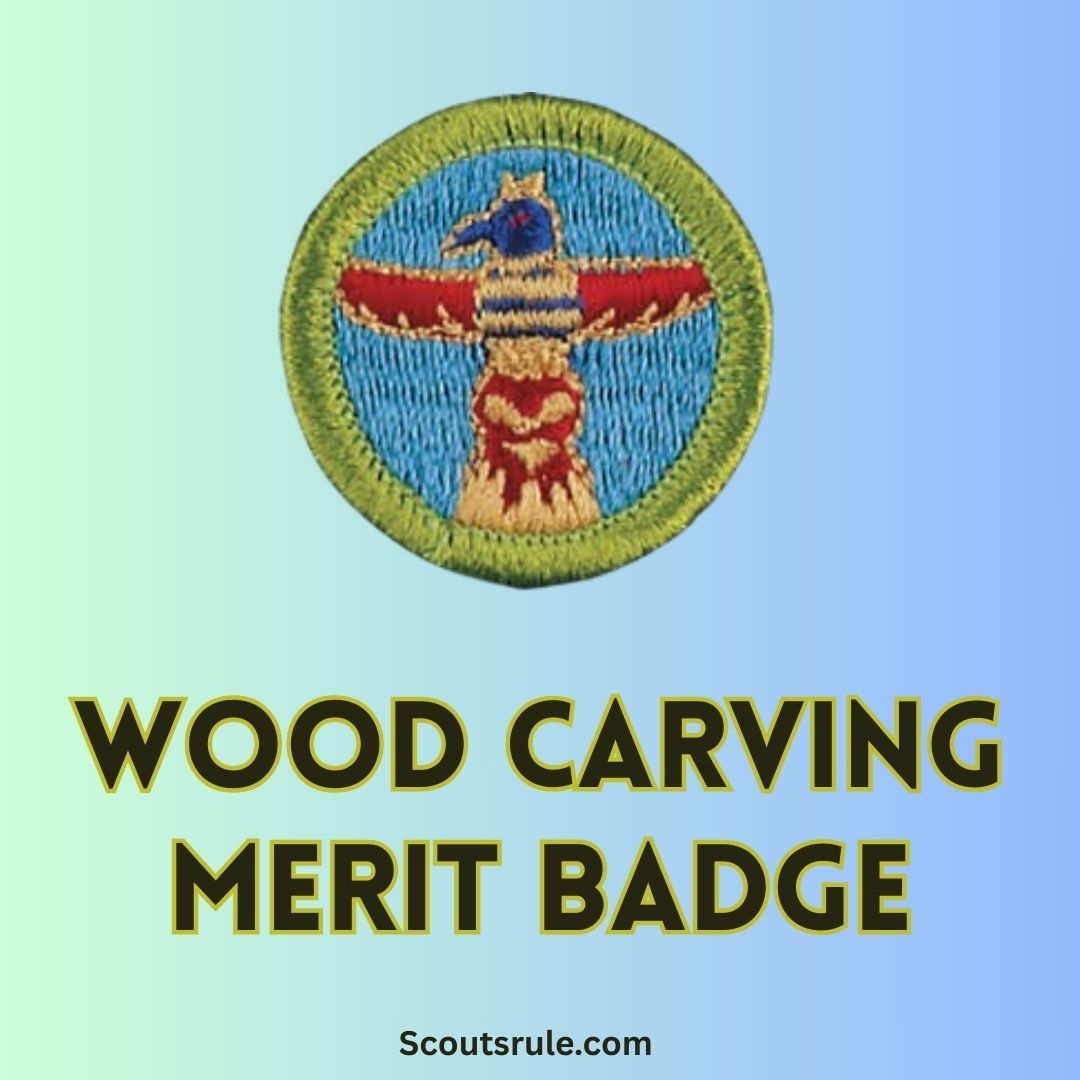
Wood carving is a time-honored craft that transforms raw wood into art. For Scouts pursuing the Wood Carving Merit Badge, this art form offers an opportunity not only to learn technical skills but also to develop an appreciation for patience, creativity, and precision. The merit badge introduces you to everything from safety practices and proper tool care to basic carving techniques and project design. It may even spark a lifelong hobby!
In this guide, you’ll learn how to meet the official requirements set by the Boy Scouts of America while gaining practical tips and insights. (For current requirements and further details, see the official resources on the Boy Scouts of America Wood Carving Merit Badge page .)
Post Contents
- 1. The Wood Carving Merit Badge Overview
- 2. Emphasizing Safety and First Aid
- 3. Tools of the Trade: Care and Proper Use
- 4. Basic Wood Carving Techniques: The Essential Cuts
- 5. Choosing the Right Wood
- 6. Planning and Completing Your Projects
- 7. Tips for a Successful Carving Experience
- 8. The Benefits of Learning Wood Carving
- Wood Carving Merit Badge Requirements: A Comprehensive Guide
- 1. Safety in Wood Carving
- 2. Safety Recognition and Checklists
- 3. Tool Usage and Care
- 4. Demonstrating Fundamental Wood Carving Techniques
- 5. Understanding Wood Varieties
- 6. Crafting a Simple 3D Carving for My Merit Badge Project
- 7. Crafting a Simple Low-Relief Carving for My Merit Badge
- Tools for Wood Carving
- Care of Tools
- Basic Cuts in Wood Carving
- Final Integration
- Conclusion
1. The Wood Carving Merit Badge Overview
The Wood Carving Merit Badge is designed to introduce Scouts to the fundamentals of carving wood into decorative or functional objects. By earning this badge, you will:
- Demonstrate an understanding of the hazards inherent in carving and how to prevent them.
- Learn first aid techniques for minor carving injuries (cuts, scratches, and splinters).
- Show competence with various carving tools and sharpening devices.
- Practice different types of cuts essential to the craft.
- Choose appropriate wood for specific projects.
- Complete a carving project – either a carving in the round or a relief (chip) carving.
The badge is not only about learning wood carving techniques but also about appreciating the artistry and responsibility that accompany working with sharp tools and natural materials.
2. Emphasizing Safety and First Aid
Understanding the Hazards
Wood carving, like any craft involving sharp tools, carries certain risks. According to the official merit badge requirements, you must explain to your counselor the hazards you are most likely to encounter while carving—and know how to mitigate these risks. Common hazards include:
- Cuts and Lacerations: Sharp carving tools may easily lead to accidental cuts.
- Splinters and Scratches: Even with protective gloves, handling wood can result in small splinters.
- Dust Inhalation: Carving produces wood dust, which may be hazardous if inhaled over prolonged periods.
- Tool-Related Injuries: Misuse of chisels, gouges, and knives can also lead to injury.
First Aid for Carving Injuries
It is essential that you know basic first aid related to minor injuries. Typical first aid steps include:
- Cleaning the wound: Rinse cuts or splinters with clean water and mild soap.
- Stopping the Bleed: Use a clean cloth or bandage and apply gentle pressure.
- Using Antiseptics: Applying antiseptic cream to cuts helps prevent infection.
- Bandaging: Cover the injury with a sterile bandage.
- Seeking Professional Help: In cases of deep cuts or if signs of infection occur.
During your merit badge project, you’ll have the chance to demonstrate your knowledge of first aid for incidents common in wood carving. This instructional phase underlines that safe carving is the foundation that must come before any creative work.
Totin’ Chip and Safety Checklist
Many Troops incorporate the Totin’ Chip recognition within the Wood Carving Merit Badge process. You should discuss your understanding of a safety checklist for carving with your counselor. The checklist includes all safe work practices—from wearing a carving glove and apron to proper lighting and ventilation in your work area. Mastering these safety protocols is crucial not only for passing the merit badge requirements but also for ensuring a long and enjoyable carving career.
3. Tools of the Trade: Care and Proper Use
Essential Tools and Their Uses
Wood carving traditionally requires a variety of tools. As part of the requirements, you are expected to explain, either orally or in writing, the care and proper use of five different tools that may be used in a carving project. Common tools include:
- Carving Knives: These are the most fundamental tools, used for paring and shaping wood.
- Chisels and Gouges: They are used for removing larger sections and creating details in your work.
- V-Tools: Ideal for making fine, sharp lines and detailed cuts.
- Hooked Tools: Sometimes, these are used in relief carving to create texture.
- Sharpening Devices: Tools such as honing stones or strops are used to maintain a keen edge on your blades.
Caring for and Using Your Tools
- Maintenance:
- Keep your blades sharpened and clean. A dull blade not only hampers precision but also increases the likelihood of accidents.
- Store tools in a safe, dry place to prevent rust and damage.
- Regularly inspect your tools for signs of wear or damage.
- Use:
- Always handle sharp tools with care. Use a carving glove or a protective guard if advised.
- Learn the proper grip for each tool; by holding tools correctly, you ensure better control and reduce the risk of momentum-based injuries.
- Clear away wood shavings regularly to avoid slipping.
Your ability to demonstrate proper tool care and safe handling is a key component of the merit badge. Your counselor will assess your knowledge by asking you to describe these processes and may have you demonstrate the proper use of a sharpening device.
4. Basic Wood Carving Techniques: The Essential Cuts
Knowing how to make the right type of cut is fundamental in wood carving. The merit badge requirements call for you to show your proficiency with several key techniques using a piece of scrap wood or a project you’ve started. The techniques include:
Paring Cut
- Definition: A paring cut is a controlled slicing action that removes a thin layer of wood.
- Use: It’s used for fine detailing or finishing surfaces.
- Technique: Hold the knife at a low angle and push it steadily along the wood grain.
Basic Cut and Push Cut
- Definition: The basic cut involves both slicing through the wood and pushing the blade through in a controlled manner.
- Use: Ideal for removing more significant amounts of material in initial stages of a carving starter.
- Technique: Use firm, even pressure and follow the natural grain of the wood. The push cut is similar but emphasizes pushing the blade forward until a removal is complete.
“V” Cut
- Definition: The “V” cut creates a V-shaped groove in the wood, which is often used to accentuate details or make precise markings.
- Technique: With the appropriate V-tool, carve along the desired pathway so that the two sides meet at a fine point, creating a crisp detail.
Stop Cut/Score Line
- Definition: A stop cut, or score line, outlines the area to be carved and helps control the depth of subsequent cuts.
- Use: It acts as a guide to prevent over-carving.
- Technique: Cut a shallow, straight line along the planned outline. This will serve as your boundary or “stop” when removing material.
Mastering these cuts is central to your carving project. Practice on scrap wood until you achieve consistent control in your movements. Documenting your progress and explaining your technique to your counselor will be a key component of your merit badge assessment.
5. Choosing the Right Wood
Different projects require different types of wood. An important part of the merit badge requirements is to explain why various types of wood are chosen for specific projects and to justify your personal project’s wood selection.
Factors to Consider When Selecting Wood
- Softwood vs. Hardwood:
- Softwoods (such as pine or basswood) are easier to carve. They’re ideal for beginners who need to practice basic cuts and techniques.
- Hardwoods (like oak or walnut) are more durable and provide a fine finished product but require advanced tools and techniques because of their density.
- Grain and Texture:
- The grain of the wood can affect how well the tools cut through it. A straight, tight grain is generally easier to control than a highly irregular or knotty grain.
- The texture and moisture content also play a role in how the wood responds to carving, so selecting dry and well-seasoned wood is usually best.
- Purpose of the Carving:
- Some projects, such as chip carvings or relief carvings, require wood that can hold detailed designs.
- For carving in the round, the wood’s overall shape and stability are important.
In your merit badge project, be sure to discuss why you chose your particular type of wood, reflecting on the type of project you’ve planned or selected from the merit badge pamphlet.
6. Planning and Completing Your Projects
The Wood Carving Merit Badge culminates in two critical project requirements:
Carving in the Round (Requirement 6)
- Definition: A carving in the round is a three-dimensional sculpture that can be viewed from all sides.
- Planning:
- Sketch your design. Consider the overall shape, details, and how the object will be supported.
- Outline the features that need special attention, such as depth and overhanging elements.
- Execution:
- Begin by roughing out the basic shape using the basic cut and push cut techniques.
- Progressively refine your carving by switching to more detailed cuts like the paring cut or V cut.
- Constantly check your design from multiple angles to ensure balance and symmetry.
Low-Relief or Chip Carving (Requirement 7)
- Low-Relief Carving:
- This involves carving a design such that the relief (the raised portion) remains attached to the background.
- The focus is on subtle contrasts in depth and texture.
- Chip Carving:
- In chip carving, small chips or pieces of wood are removed to create a pattern or design.
- It requires precision and repetition, and it often results in intricate designs.
- Planning and Execution:
- Choose a design that suits your skill level and the wood you’re using.
- Use a stop cut or score line to outline the intricate parts of your design.
- Methodically remove chips of wood until the design is clearly visible.
- Balance patience with attention to detailed work; the final result often reflects the time you dedicated to perfecting each element.
These projects not only allow you to showcase your technical capabilities but also serve as a tangible piece of artwork that embodies your journey through the merit badge requirements.
7. Tips for a Successful Carving Experience
While the technical requirements are essential, several practical tips can help ensure your wood carving experience is both safe and enjoyable:
Setting Up Your Workspace
- Dedicated Area:
Choose a well-ventilated, well-lit workspace. Ideally, use a dedicated table or workbench that can withstand carving debris. - Safety Equipment:
Always have a first aid kit nearby and consider wearing protective gloves. Safety glasses can also prevent wood chips from injuring your eyes. - Tool Organization:
Lay out your tools neatly. A clear, organized workspace not only increases safety but also helps maintain focus as you work on detailed carving.
Planning and Practicing
- Sketch Your Design:
Before picking up your tools, spend time sketching out your ideas. A detailed sketch often serves as your roadmap throughout the carving process. - Practice Basic Cuts:
Spend adequate time practicing the essential cuts on scrap pieces of wood. This repetitive practice builds muscle memory and confidence. - Patience:
Wood carving is as much about finesse as it is about cutting away material. Take regular breaks to avoid frustration and ensure a steady hand.
Tool Maintenance and Personal Safety
- Sharpening Routine:
Regularly maintain your tools. A sharpened tool not only carves more effectively but also minimizes the risk of slips that could lead to accidents. - Stay Focused:
Concentrate on your work. Distractions can increase the risk of errors and injuries. If you feel fatigued, take a break. - Clean Work Area:
Keep the workspace free of loose debris and wood shavings; a clutter-free environment helps prevent potential slips or tool mishaps.
8. The Benefits of Learning Wood Carving
Engaging in wood carving as part of the merit badge program yields benefits that go far beyond the scope of the activity itself:
Developing Fine Motor Skills
Precise hand movements are integral to carving. Repeated practice enhances fine motor skills that are applicable in many other areas—be it academic tasks, other crafts, or even certain professional skills.
Fostering Creativity and Artistic Expression
Wood carving allows you to bring your ideas to life. Whether you’re carving a figurine, creating a decorative relief, or designing a functional object, the creative process is an excellent outlet for self-expression.
Building Patience and Discipline
The carving process often demands hours of careful work. The necessity for patience and attention to detail fosters a disciplined approach. Learning that mistakes can be corrected with practice and perseverance is a valuable life lesson.
Instilling a Sense of Accomplishment
Completing a carving project offers tangible evidence of your effort and skills. Every finished piece, whether simple or elaborate, stands as a personal achievement and a memento of your journey through the merit badge.
Encouraging Lifelong Hobbies and Skills
Once you’ve mastered the basics of wood carving, you might continue to develop this craft beyond the merit badge. Many find that wood carving evolves from a merit badge requirement into a lifelong hobby that brings joy, relaxation, and even professional opportunities in woodworking or art.
Below is a comprehensive guide covering the Wood Carving Merit Badge requirements. This guide outlines everything—from anticipating hazards and caring for your tools to demonstrating carving techniques and completing projects. Use this document as both an instructional reference and a study guide as you work toward earning your merit badge.
Wood Carving Merit Badge Requirements: A Comprehensive Guide
Wood carving is a traditional art that transforms a simple block of wood into objects of beauty and function. Earning the Wood Carving Merit Badge means not only learning the creative techniques but also developing the discipline, safety awareness, and tool-management skills that are essential for any craftsperson. In this guide, we’ll break down the official requirements into clear sections while also offering practical tips and detailed explanations for each component of the process.
Note: Always refer to the most current official guidelines when working on your project, as requirements may be updated by the Boy Scouts of America.
1. Safety in Wood Carving
1(a) Anticipating and Preventing Hazards in Wood Carving
Before the saw and the chisel ever touch your wood, safety is paramount. Wood carving involves sharp tools and flying chips, so understanding and anticipating hazards helps prevent accidents. Some common hazards include:
- Cuts and Lacerations: Carving tools such as knives, chisels, and gouges are extremely sharp. An unexpected slip or an improper grip may result in a cut.
- Splinters: Even smooth wood can produce splinters that may embed in your skin.
- Wood Dust: Fine particles generated while carving may irritate your respiratory tract and eyes.
- Tool Misuse: Incorrect use of tools, such as working with a dull blade, increases the risk of accidents because your cutting hand must use more force, leading to slips.
Prevention Strategies:
- Maintain a Clean Workspace: A well‑lit and organized area minimizes distractions and physical hazards. Ensure that your workbench is stable, and the area is free of clutter.
- Wear Personal Protective Equipment (PPE): Use carving gloves (or a padded glove on your non‑cutting hand), safety glasses, and even a dust mask when appropriate.
- Establish a Safety Checklist: Before you begin, review a checklist that covers tool inspection, work area setup, and proper personal attire.
- Use Controlled Motions: Plan each cut by keeping the tool in contact with the wood and following the grain to avoid accidental slips.
1(b) First Aid for Wood Carving Injuries
Even with careful planning, accidents can happen. You must be familiar with basic first aid procedures tailored to the types of injuries most common in wood carving.
First-Aid Procedures:
- For Cuts and Lacerations:
- Clean the Wound: Immediately rinse the area using clean water and a mild soap. Remove any visible wood fragments.
- Stop the Bleeding: Apply gentle pressure with a clean cloth or bandage. Elevate the injured area if possible.
- Disinfect and Protect: Use an antiseptic cream and cover the wound with a sterile bandage. If the cut is deep or does not stop bleeding, seek professional medical attention.
- For Splinters:
- Remove the Splinter: Use tweezers disinfected with alcohol. If the splinter is deeply embedded, soaking the area in warm water can help loosen the wood.
- Clean and Cover: Once removed, clean the area and apply an adhesive bandage to prevent infection.
- For Wood Dust Exposure:
- Avoid Inhalation: Work in a well‑ventilated area or use a dust mask. If you experience irritation, move to fresh air and rinse your eyes if necessary.
Regularly refreshing your knowledge of these steps—not only for the merit badge requirements but also for your personal safety—is strongly recommended.
2. Safety Recognition and Checklists
2(a) Earn the Totin’ Chip Recognition
The Totin’ Chip is a recognition earned by Cub Scouts and Carvers who demonstrate an understanding of safe practices and the proper handling of tools during wood carving. To earn this recognition, you will need to:
- Explain the Hazards: Show that you can anticipate potential accidents and have strategies in place to avoid them.
- Demonstrate Safe Practices: Exhibit proper handling of knives, chisels, and gouges; discuss the importance of a clean work area; and explain the personal protective measures you use.
- Apply Safety in Your Project: While working on your merit badge project, your counselor may evaluate how well you adhere to your safety checklist.
2(b) Understanding the Safety Checklist for Carving
A safety checklist is an essential tool to ensure you are prepared before each carving session. It should include:
- Personal Protective Equipment (PPE): Confirm that all required gear—gloves, safety glasses, dust masks—is worn.
- Tool Condition Check: Ensure that all carving tools and sharpening devices are in good condition, free of cracks or dents.
- Organized Workspace: Verify that your workbench is stable and that all tools have a designated place.
- First Aid Kit Availability: Make sure a first aid kit is within reach.
- Environmental Considerations: Check that there is adequate lighting and ventilation.
Before beginning any carving session, review and tick every item on your checklist. This not only keeps you safe but also instills a professional approach to your craft.
3. Tool Usage and Care
3(a) How to Care and Use Carving Tools
Your carving tools are an extension of your creative vision. Proper care not only ensures a safe working environment but also extends the life of your tools.
Best Practices for Carving Tools:
- Cleaning: After each use, wipe the tools with a clean, dry cloth to remove wood shavings and moisture. Avoid leaving soot or dust, which can lead to corrosion.
- Storage: Store your tools in a dry, secure location. A wooden box or a specialized leather tool roll keeps them safe from damage.
- Handling: Always hold tools firmly by the handle. When not in use, secure the blade by sheathing it if possible.
- Usage: Follow the natural grain of the wood when carving. This minimizes the chance of splitting or unexpected blade slips.
3(b) How to Care and Use Sharpening Devices
A sharp tool is a safe tool. Sharpening devices such as honing stones or strops are crucial for maintaining a keen carving edge.
Key Points on Tool Sharpening:
- Selecting the Right Sharpening Stone: Choose a stone appropriate for your tool’s metal. Common grit levels can range from coarse for heavy dulling to fine for finishing.
- Using Honing Oil: Always apply a few drops of honing oil to the stone. This not only lubricates the surface but also helps flush away small metal and wood particles.
- Proper Technique: Hold the blade at the recommended angle (typically around 20° for carving knives) and gently draw it along the stone in smooth, consistent strokes.
- Regular Maintenance: Frequent touch-ups are ideal; do not wait until your tools are very dull since maintaining an edge is safer and more efficient.
Effective sharpening preserves the performance of your tools and directly impacts the quality of your carving.
4. Demonstrating Fundamental Wood Carving Techniques
Mastering wood carving requires an understanding of several key techniques. You are expected to demonstrate proficiency in these techniques using a piece of scrap wood or a part of your merit badge project.
Fundamental Techniques Include:
- Paring Cut:
What it Is: A delicate, controlled slicing action that removes a thin layer of wood.
How to Do It: Hold your knife at a low angle to the wood surface and push forward along the grain. This cut is ideal for refining details and smoothing surfaces. - Basic Cut (or Push Cut):
What it Is: A more forceful cut used to remove larger amounts of wood at the start of a project.
How to Do It: Firmly push the knife through the wood in a single, smooth motion, keeping the blade aligned with the wood grain. - Scoreline Cut:
What it Is: A shallow, incising cut that marks the outline of the design, guiding subsequent deeper cuts.
How to Do It: Using a steady hand, lightly draw a line along your design’s edge. The score line acts as a “stop cut” for other tools. - Stop Cut:
What it Is: A definitive cut that terminates the removal of wood along a design line.
How to Do It: Execute a perpendicular or angled cut to delineate boundaries in your carving. - V-Cut:
What it Is: A cut that produces a V-shaped groove, often used to create details or contrast in relief carving.
How to Do It: Employ a V-shaped tool and carefully carve along the desired line, ensuring symmetry for a crisp detail.
Practice these fundamental cuts on scrap pieces of wood until you can perform them cleanly and consistently. Mastery of these techniques is the cornerstone of a successful wood carving project.
5. Understanding Wood Varieties
Choosing the right type of wood is crucial for a successful carving project. Different wood varieties have unique properties that affect carving ease, finish quality, and durability.
Factors to Consider:
- Softwoods vs. Hardwoods:
- Softwoods: Pine, basswood, or cedar are easier to carve and tend to have a finer grain. They are ideal for beginners and intricate detail work.
- Hardwoods: Oak, walnut, or maple are more durable and offer beautiful grain patterns but require extra effort and sharper tools.
- Wood Grain:
A straight, even grain minimizes the risk of unexpected splits and makes it easier to maintain consistent cuts. - Moisture Content:
Well-seasoned, dry wood is preferred for carving. Wood with too much moisture may warp or cause the blade to catch.
For your merit badge project, explain your choice of wood by discussing how these factors play into your design, whether for a three-dimensional (3D) carving or a low-relief (chip) carving project.
6. Crafting a Simple 3D Carving for My Merit Badge Project
A 3D carving is a sculpture that can be appreciated from all sides. It requires careful planning and a gradual removal of wood until the desired form is achieved.
Steps to Create a 3D Carving:
- Design and Sketch:
Draw a detailed sketch of your subject. Consider the overall volume, the balance of proportions, and the specific features that need emphasis. - Select Your Wood:
Choose a suitable block of wood (typically a softwood like basswood is ideal for beginners) that offers enough volume for your design. - Rough Shaping:
Use basic cuts (like push cuts) to remove large portions of wood and define the approximate shape. - Detailing:
Transition to finer cuts such as the paring cut and V‑cut to refine features such as facial details, texture, or intricate patterns. - Finishing:
Smooth the surfaces using sandpaper or a finer tool to prepare the carving for painting or another finish.
Document your process by taking photographs of your work at various stages. This record will help you explain your methods to your counselor and reflect on your progress.
7. Crafting a Simple Low-Relief Carving for My Merit Badge
Low‑relief, or chip carving, is a technique where the design is carved in shallow relief so that the background remains and the raised design is created by removing only selected chips.
Steps to Create a Low‑Relief Carving:
- Choose Your Design:
Select a pattern or design that suits a shallow carving. Patterns with repeating elements (like geometric shapes or nature motifs) are ideal. - Outline the Design:
Use a scoreline cut to mark the boundaries of your design on the wood. - Remove Material:
Carefully chip away at the wood between the design elements, using stop cuts to control the depth and maintain consistency. - Finalize the Details:
Refine the edges with paring cuts and use the V‑cut tool to sharpen intricate lines within your design. - Finishing Touches:
Sand lightly and, if desired, apply a finish to protect your carving and bring out the contrast between the relief and the background.
As with the 3D carving, create a portfolio of progress shots and notes regarding your methods to showcase your skill development.
Tools for Wood Carving
Proper tool selection and responsible workspace organization are essential for safety and productivity.
1. Pocketknives
- Role:
A pocketknife is often the most basic tool used for initial carving, shaping, and detail work. - Usage:
Choose one with a comfortable grip and sufficient control. Always retract or cover the blade safely when not in use.
2. Other Carving Tools
- Chisels, Gouges, and V‑Tools:
These allow you to remove larger sections or add finer details. - Specialized Carving Knives:
Designed for delicate paring and finishing cuts. - Measuring and Marking Tools:
Pencils and rulers help to sketch and plan your design accurately.
3. Arranging the Work Space
- Work Surface:
A sturdy, flat workbench ensures stability. - Lighting:
Good lighting is imperative to see fine details and prevent mistakes. - Tool Storage:
Arrange your tools within easy reach, but in a manner that minimizes accidents. A designated area helps avoid clutter and keeps safety in mind.
Care of Tools
The longevity and performance of your tools depend on careful maintenance. Follow these guidelines to ensure that your tools remain sharp, safe, and ready to use.
1. When Is a Tool Sharp?
- Definition:
A tool is considered sharp when it can slice through wood fibers easily without excessive force. You should feel a clean cut rather than a ragged tear. - Indicators:
A dull tool tends to snag on the wood and requires more effort, thereby increasing the chance of slip accidents.
2. The Carving Edge
- Importance:
The “carving edge” is the part of your tool that does the cutting. Keeping this edge precise is essential for detail work. - Maintenance:
Regular inspection of this edge for nicks and burrs is important to decide when sharpening is needed.
3. Sharpening Stones
- Selection:
Use a sharpening stone with a grit that is appropriate for your tool’s current condition. Coarse stones are for initial shaping, while fine stones refine the edge. - Technique:
Practice proper angles and maintain consistent pressure when using your stone.
4. Honing Oil
- Purpose:
Honing oil lubricates the stone, enhancing the cutting process and preventing metal particles from clogging the stone’s pores. - Usage:
Always apply a few drops before sharpening to help the process flow smoothly.
5. Care of Stones
- Cleaning and Storage:
Clean your sharpening stones after use by rinsing off any residue. Store them in a dry area to prevent deterioration. - Maintenance:
Periodically flatten the stone if it becomes uneven to maintain an effective sharpening surface.
Basic Cuts in Wood Carving
No wood carving project is complete without a mastery of the fundamental cuts. Here are the basic cuts you should know:
1. Paring Cut
- Purpose:
Creates a clean, thin slice of wood and is ideal for fine detail work. - Technique:
Hold the knife at a shallow angle, gently paring away along the wood grain.
2. Basic Cut
- Purpose:
Removes a slightly larger section of wood. Often used during the initial roughing out of your design. - Technique:
Use a firm push, maintaining control while following the grain.
3. Scoreline
- Purpose:
The scoreline marks the outline of your design, acting as a guide for subsequent cuts. - Technique:
Use a light, shallower cut so that the line is visible without deeply cutting into the wood.
4. Stop Cut
- Purpose:
Marks the termination of a cut so that you don’t remove too much wood. - Technique:
Make a perpendicular or angled cut to clearly define the boundary of the work.
5. V-Cut
- Purpose:
Produces a V-shaped groove, useful for sharpening detail and contrast. - Technique:
Use a V‑tool to carve along your marked lines, ensuring symmetry and uniform depth.
Final Integration
By meeting each of these requirements, you not only fulfill the Wood Carving Merit Badge criteria, but you also develop a level of craftsmanship and safety-aware discipline that can serve you for years.
You will need to:
- Plan and document every step, from hazard anticipation and first aid to selecting the right wood and techniques.
- Practice repeatedly until the basic cuts, such as paring, scorelines, and stop cuts, become second nature.
- Maintain and care for your tools and sharpening devices so your work remains precise and safe.
- Complete a project that demonstrates both a three-dimensional carving and a low‑relief carving, proving that you understand and can apply all the techniques learned.
Conclusion
Remember, wood carving encompasses more than simply shaping wood; it is about learning the values of dedication, prudence, and perseverance. It’s a journey that mirrors the wider experiences in Scouting: a blend of adventure, learning from mistakes, and celebrating every small victory along the way.

Hi, Robin here, A former lead Scout and here I share my inspiring stories about USA Scouts, leadership, adventure, how to guides and more.


